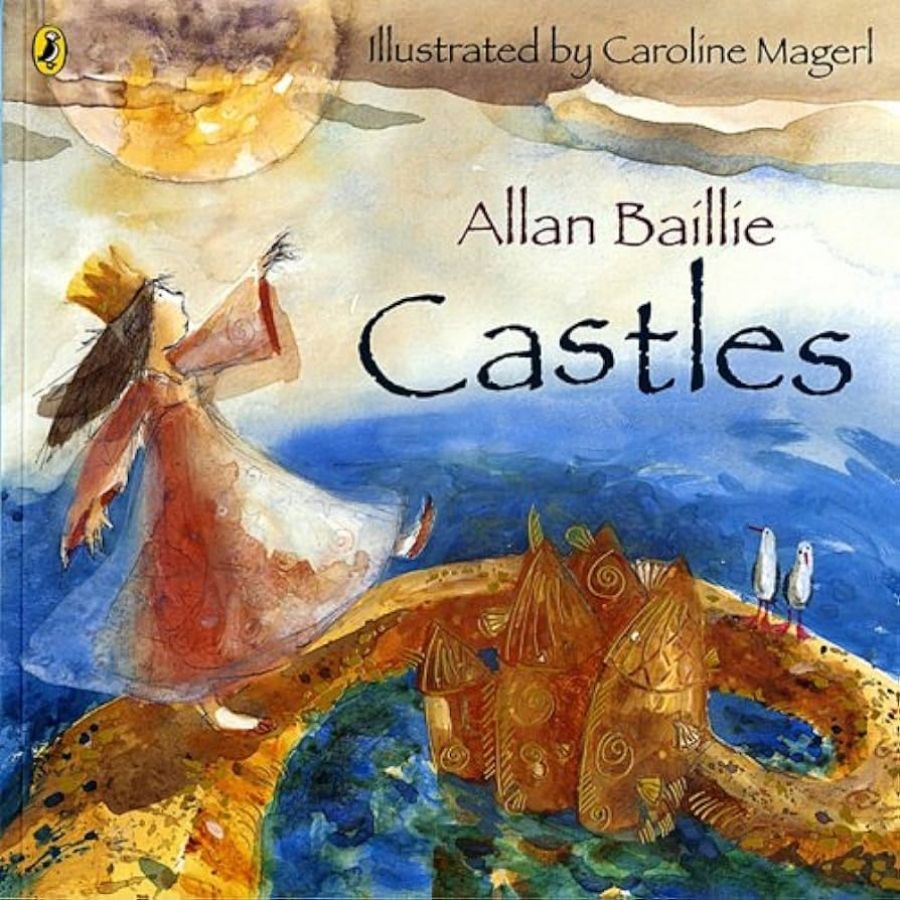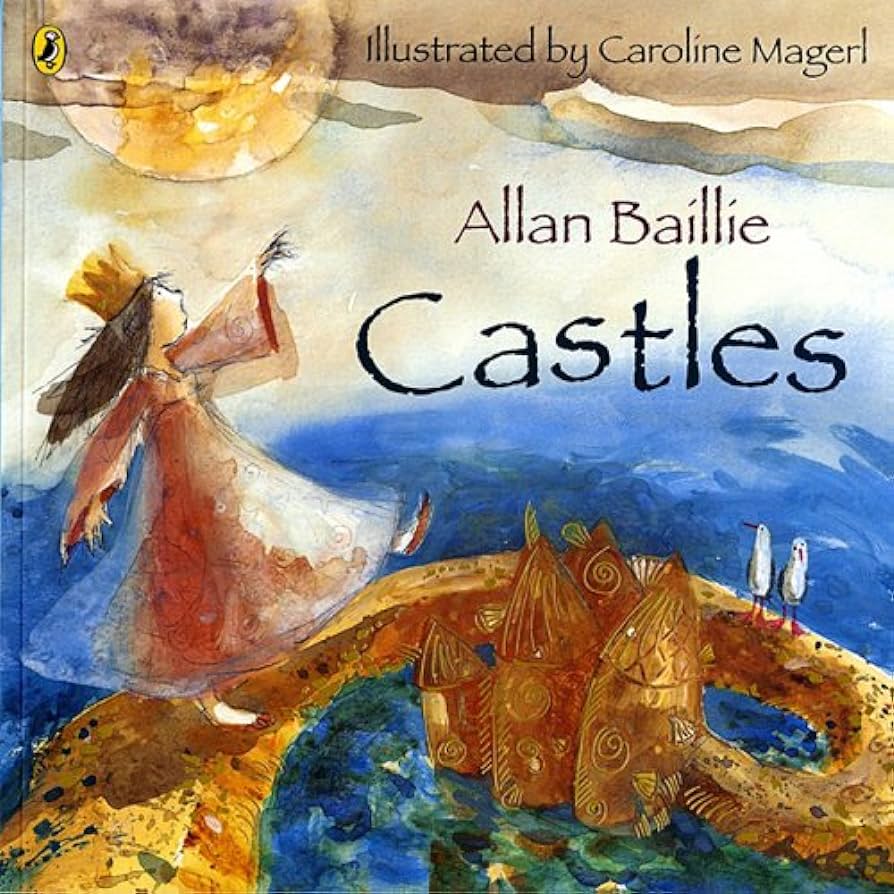
- Free Article: No
- Contents Category: Picture Books
- Review Article: Yes
- Article Title: Beyond the confines of reality
- Online Only: No
- Custom Highlight Text:
No kangaroos, emus or possums in this lot – just pigs, rats, hares, cats, dogs and fantastic monsters. Australian picture books are in a healthy state if these five beautifully produced, cleverly constructed and thoughtful examples represent the genre. All celebrate that peculiarly human gift, imagination – the unsuspected alternatives, the leap outside the confines of reality. All would provide a happy reading experience for children of any age, and are illustrated without condescension by witty and confident artists. From the child imagining castles in the air to the adult building them a little too high, these authors and artists reveal their insights into all kinds of human behaviour.
- Book 1 Title: Castles
- Book 1 Biblio: Penguin, $24.95 hb, 32 pp
- Book 1 Cover Small (400 x 600):

- Book 1 Cover (800 x 1200):

The girl and boy in Allan Baillie’s Castles (Penguin, $24.95 hb, 32 pp) build sandcastles that become something far more exciting than mere heaps of silicon. The girl’s heap morphs into a place of gleaming towers filled with music, laughter, chocolates and ice cream, and she sets off into the air as a princess. But little boys will often try to spoil the dreams of their girl rivals; this boy counter-attacks, making his sandcastle a pirate ship whose cannons threaten the palace, and proving that he is a worthy rival to her imagination. A series of struggles ensue, with extravagant monsters conjured up to destroy their creations. Sandcastles have never seemed as evocative as they are in this portrayal, with Magerl’s bright pen-and-ink drawings and delicate watercolours suggesting a seascape of sunny shore, with enough swirling wind to excite small readers.
The phrase ‘unforeseen circumstances’ is a difficult concept for a child, and misunderstanding what he is told by adults leads Logan to imagine various catastrophes in Anne Ryan’s Unforeseen Circumstances (Lothian, $27.95 hb, 32 pp). Why is the beach closed? Is it because the tide forgot to flow back, or because cats and dogs have taken it over? Is there a party going on that Logan is missing? The real reason is more exciting than any of the possibilities that Logan can imagine. In this case, reality has leaped beyond his imagination, but his literal interpretation of words has provided the catalyst. Anne Ryan’s bright and claustrophobic illustrations suggest the bizarre: the mailman’s eyes are small pictures of Logan; the boy’s lollipop protrudes like a funnel from his mouth; and fearsome cats and dogs snarl from the page. Unforeseen Circumstances, with its many confronting visions, has the most adventurous illustrations of these five books, from the huge eye on its cover to the imp-like Emily pictured at the end.
John Winch’s Run, Hare, Run! The Story of a Drawing (Little Hare, $24.95 hb, 32 pp) is more immediate, a less childlike imagination at work. Winch is inspired by the grace of Albrecht Dürer’s simple and exact drawing of a hare – little is known of its fifteenth-century origin. This modern artist imagines the life that might have lain behind it. In his interpretation, a wild hare is spotted by a hunter and his hound, and the chase draws the trio from the forest and across the fields, through the farmyard and into the city. The tension rises when it seems that there is no escape, but these small pictorial clues suggest that the fate of the frightened hare is not so fearful after all. Winch’s warm homage to Dürer is a good story and will intrigue the child who is becoming aware of the possibilities of the imagination – as it creates a story and as it enables the artist.
Glenda Millard’s Angel Breath (ABC Books, $27.95 hb, 32 pp) opens with a mysterious figure hiding under the leaves. Who or what is so lost and afraid, longing for a home? Enter Pierre, a poor French peasant, who finds more than he and his one bewhiskered black pig, Jean-Jacques, are looking for. It is autumn, and Pierre and Jean-Jacques are seeking the truffles that smell as sweet as an angel’s breath. Dee Huxley’s amber, gold and blue-grey landscape – a busy European village surrounded by a richly coloured forest – provides a lyrical backdrop for the peasant and pig to snuffle through. Pierre dreams of the life he might lead if a basket of truffles brought money into his purse: perhaps a red beret for himself and a new collar for Jean-Jacques. The darker cloud on the horizon is that Pierre’s farming skills have failed him so far, but when all is revealed on the last page, we are left in hope that the treasure that Jean-Jacques and Pierre discover will lead them to fortune. Pierre’s dreams just may come true.
Such dreams are precisely the problem, according to Colin Thompson and his illustrator, Amy Lissiat. They put forward an alternative scenario in The Short and Incredibly Happy Life of Riley (Lothian, $27.95 hb, 32 pp). Unfortunately, Thompson points out, like Pierre and, much earlier, Saul Bellow’s Henderson the Rain King (1959), most of us have a voice within us saying: ‘I want, I want …’ By contrast, Riley is a rat without complexes, content to be just what and where he is. He loves his perfect partner and their many children; eats what he finds and dies happy. He is untroubled by unfulfilled desires, has no envy and never wishes for anything better.
Now that may seem rather unimaginative, but Thompson is asking us to be happy with much less than we think we need; to release our soul. Happiness, we know (but may like to forget), is not achieved by wealth, caviar, faster cars or smaller mobile phones, fame or luxury getaways. Riley’s happiness comes from falling in love, being able to scratch himself with a sharp stick, and eating plenty of fruit and slugs. Lissiat’s delightful images of Riley’s life are contrasted with the longings of discontented humans who do nasty things with pointed sticks, criticise their partners and don’t eat enough fruit. The artist calls on her own hilarious versions of famous pictures by Michelangelo, Botticelli, Leonardo da Vinci, Van Gogh and Edvard Munch to illustrate the desperate and often unrequited longings of humans.
So are rats happier than people? Probably. Thompson asks ‘What is happiness?’ and provides a thoughtful answer. His clever text suggests that we should shake off our existential angst and be content. If it were possible to convince children that they don’t need those fashionable sneakers or that fancy CD player, what will follow is the life of Riley.


Comments powered by CComment